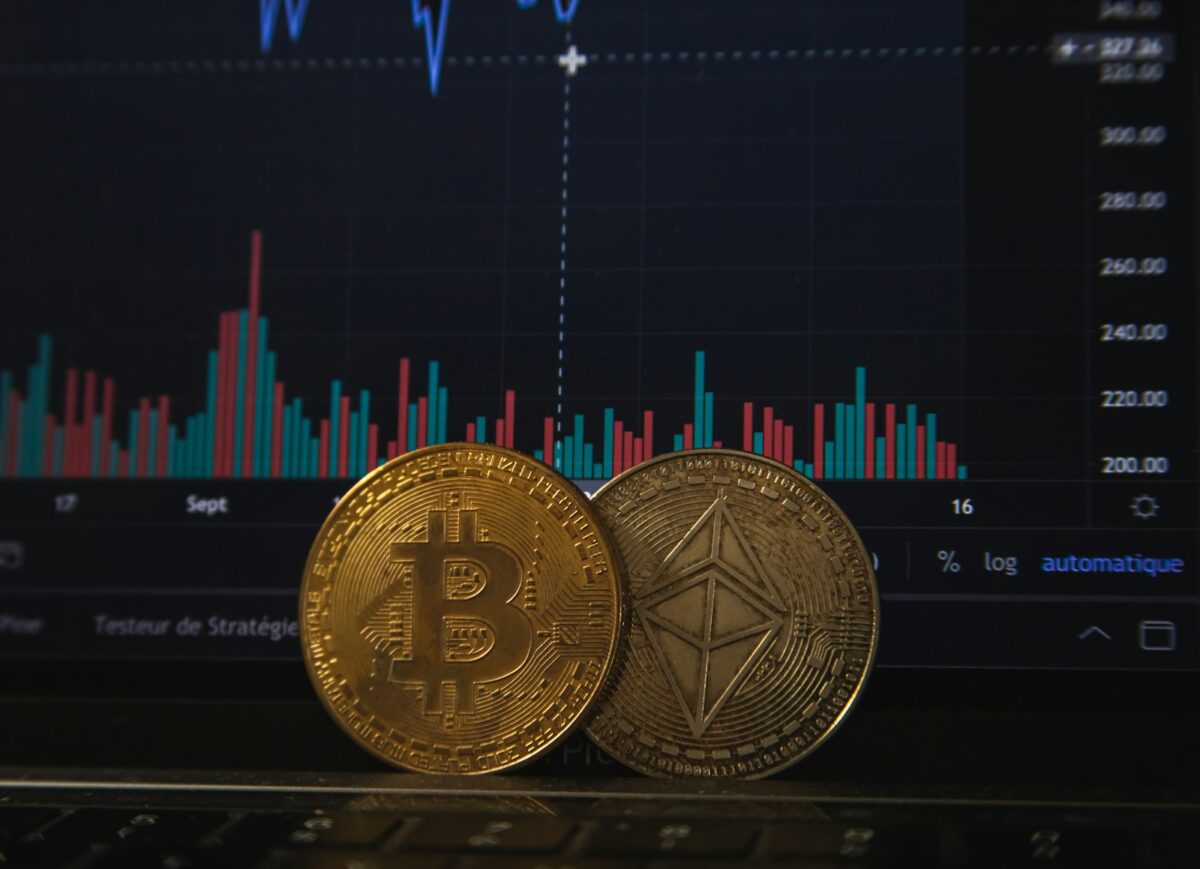
Crypto investment red flags

Pressure to act quickly is one of the most common tactics used to push individuals into risky deals. When urgency is forced without allowing time for thorough research, it signals a potential scam designed to bypass critical evaluation.
Unrealistic promises regarding returns or guarantees should trigger immediate skepticism. Offers that claim extraordinary profits with minimal risk often hide manipulative schemes, exploiting optimism while ignoring market complexities.
Diligence in verifying sources and understanding underlying mechanisms is vital. Lack of transparency, unverifiable credentials, or vague explanations frequently indicate deceptive operations aiming to mislead participants.
Due process neglect, such as skipping background checks or ignoring detailed questions about project fundamentals, exposes one to elevated vulnerability. Sound ventures encourage scrutiny rather than discourage it through aggressive persuasion tactics.
Crypto investment red flags
Immediate caution is required when projects promise consistently high returns with minimal risk, as these claims often signal underlying fraudulent schemes. Verified data shows that realistic profit margins in blockchain ventures rarely exceed 20% annually; any offer significantly above this threshold without transparent mechanisms should be treated skeptically. Investors must apply rigorous diligence to separate genuine opportunities from deceptive tactics designed to lure uninformed participants.
Unrealistic growth projections frequently accompany scams, leveraging psychological pressure and urgency to bypass analytical judgment. For instance, Ponzi schemes exploit exponential returns on initial deposits, collapsing once inflows cease. Analyzing transaction histories and smart contract codes can expose irregular fund flows indicative of such manipulations. Awareness of these warning signals helps mitigate potential losses caused by fraudulent actors operating under the guise of legitimate innovation.
Common Warning Indicators in Blockchain Ventures
- Lack of transparency: Absence of verifiable team credentials or anonymous developers increases risk substantially.
- Opaque technology: Projects refusing independent audits or withholding source code prevent technical scrutiny.
- Pressure selling tactics: Time-limited offers or aggressive marketing campaigns discourage thorough evaluation.
- No clear utility: Tokens without practical applications or decentralized protocols often serve only speculative purposes.
A detailed case study involves the analysis of a DeFi protocol that promised daily returns exceeding 1%. By dissecting its smart contracts, researchers discovered embedded functions allowing developers to alter reward algorithms arbitrarily–classic hallmarks of exit scams. Such discoveries highlight the importance of combining technical audits with behavioral assessments before committing capital.
The statistical correlation between unchecked hype and project failure emphasizes the necessity for methodical investigation. Comparing historical data on token performance reveals patterns where rapid value appreciation coincides with increased volatility and eventual collapse. Applying quantitative models to evaluate risk-adjusted returns enables investors to discern sustainable projects from speculative bubbles masked by sophisticated marketing strategies.
In conclusion, identifying suspicious signs requires continuous education and empirical validation through blockchain forensics tools and financial analysis frameworks. Encouraging experimental approaches such as simulated trades on testnets or sandbox environments can build practical understanding while minimizing exposure to scams. Prioritizing evidence-based assessment over emotional impulses establishes a foundation for secure participation in this complex ecosystem.
Unrealistic Return Promises
Promises of exceptionally high returns with little to no risk often signal potential hazards in the realm of digital asset allocation. Such claims frequently lack a grounded basis in market dynamics or algorithmic performance, serving as early indicators of fraudulent schemes. Exercising due diligence by verifying projected yields against historical data and industry benchmarks is indispensable for safeguarding capital.
Pressure tactics urging rapid commitment amplify suspicion when paired with extraordinary profit forecasts. Legitimate ventures provide transparent timelines supported by verifiable metrics rather than relying on urgency to secure funds. Recognizing these warning signs can prevent exposure to losses associated with speculative traps.
Technical Insights into Unrealistic Yield Projections
Quantitative analysis reveals that sustainable annualized gains rarely exceed single-digit percentages without substantial risk exposure or leverage. Platforms promising daily or weekly returns surpassing 1% typically operate outside conventional financial principles. For instance, Ponzi schemes masquerading as yield farms have demonstrated collapse rates exceeding 90% within months after enticing investors with such figures.
Blockchain protocols employing consensus algorithms like Proof-of-Stake (PoS) or Delegated Proof-of-Stake (DPoS) generate staking rewards aligned closely with network inflation and participation rates, generally ranging between 4-12% annually. Returns deviating significantly from these norms warrant comprehensive scrutiny, including smart contract audits and governance transparency assessments.
- Case Study: A decentralized finance protocol advertised consistent 20% monthly returns via liquidity mining incentives but failed due to unsustainable token emission schedules leading to hyperinflation and rapid devaluation.
- Example: High-yield lending platforms offering fixed daily interest rates ignored borrower default probabilities, resulting in liquidity crises and frozen user assets.
Systematic evaluation involves cross-referencing claimed gains with underlying economic models and tokenomics structure. Anomalies between promised yields and actual throughput often indicate manipulation or misrepresentation designed to attract uninformed participants. Employing blockchain explorers and analytics tools enhances transparency by tracking fund flows and contract interactions.
Cultivating critical inquiry through experimentation–such as simulating return scenarios under varying market conditions–strengthens understanding of feasibility limits inherent in digital asset growth prospects. Encouraging methodical testing reduces susceptibility to emotionally driven decisions influenced by exaggerated profitability assurances prevalent among fraudulent operations.
Lack Of Transparent Team
The absence of a clearly identified and verifiable development team is a critical indicator that demands thorough scrutiny. Investors must apply rigorous diligence to verify the credentials, track records, and online presence of project founders and contributors. Projects lacking detailed biographies, LinkedIn profiles, or verifiable past experience raise immediate concern due to their susceptibility to scams and fraudulent behavior.
Applying pressure on teams through direct communication attempts can reveal inconsistencies or evasiveness in responses, which serve as warning signals. Legitimate projects usually maintain open channels for dialogue and provide transparent updates on milestones. Unwillingness or delay in addressing questions about team structure often correlates with the use of manipulative tactics aimed at obscuring identity to avoid accountability.
The promise of unrealistic returns without transparent leadership further compounds suspicion. Historically, numerous schemes have exploited anonymity by promoting excessively high yields while concealing the human capital behind technical development. For example, cases like OneCoin demonstrated how opaque teams orchestrated complex narratives to mislead participants into believing in artificially inflated projections.
A structured approach to evaluating team transparency includes cross-referencing public data repositories such as GitHub contributions, analyzing social media activity consistency, and checking for previous project involvements. Due diligence uncovers discrepancies that act as early cautionary signals against potential misuse of funds or intentional obfuscation. Maintaining vigilance regarding team visibility strengthens risk assessment frameworks and fosters more informed decision-making processes.
Unsupported Technology Claims
When evaluating a digital asset proposal, it is critical to scrutinize technology claims that lack empirical support or technical validation. Promises of extraordinary returns often arise from alleged innovations that remain unverified by independent audits or peer reviews. Such assertions should prompt immediate caution, as they frequently mask underlying scams designed to exploit investor enthusiasm without delivering functional solutions.
Technological descriptions that rely heavily on jargon without clear explanations or demonstrable prototypes represent significant signals warranting thorough examination. Unrealistic performance metrics, such as transaction speeds far exceeding established benchmarks without detailed architecture disclosures, often indicate overstatements rather than genuine breakthroughs. Applying rigorous due diligence includes verifying source code availability, consensus mechanism transparency, and third-party security assessments.
Indicators of Unsupported Technological Claims
- Lack of Open Source Code: Genuine projects typically provide accessible repositories where developers can audit and contribute. Closed or unavailable codebases obstruct independent verification and increase risk.
- Absence of Peer-Reviewed Research: Legitimate innovations often have supporting academic papers or technical documents subjected to expert evaluation. Missing documentation raises questions about feasibility.
- No Working Prototype or Testnet: Demonstrations through live networks or test environments are essential for validating proposed features before mainnet launches.
- Vague Technical Descriptions: Overly broad claims without concrete methodology or system design details reduce credibility and hinder informed analysis.
A notable example involves projects asserting the use of proprietary consensus algorithms claimed to solve scalability and decentralization simultaneously without presenting architectural blueprints or simulation data. Independent studies in blockchain research indicate inherent trade-offs, such as the well-documented CAP theorem constraints, making these declarations scientifically questionable unless accompanied by robust evidence.
The pressure exerted on potential participants to commit funds quickly based on these unsupported technological promises represents a behavioral pattern commonly observed in fraudulent schemes. This urgency undermines methodical evaluation processes, increasing susceptibility to loss. Analytical frameworks recommend resisting haste and seeking corroborative expertise before engagement.
Assessing technology claims with empirical rigor enhances decision-making quality when allocating capital towards emerging digital protocols. Practical approaches include conducting source code audits using automated tools like static analyzers, engaging with developer communities for insights, and comparing claimed functionalities against established cryptographic standards and consensus models documented in peer-reviewed literature. Such systematic scrutiny reduces exposure to misleading narratives and promotes sustainable participation grounded in verifiable innovation.
Absence Of Regulatory Compliance
Thorough due diligence is critical when evaluating ventures lacking clear regulatory adherence. Entities operating without proper licensing or registration often employ tactics that obscure transparency, increasing the likelihood of scams. Such projects may promise unrealistic returns to attract participants rapidly, creating pressure to commit funds before comprehensive evaluation is possible. Identifying these warning signals early can prevent significant financial losses and protect stakeholders from unverified schemes.
Regulatory frameworks exist to ensure accountability, investor protection, and operational integrity. When a platform or offering sidesteps these requirements, it frequently reflects an intentional attempt to avoid scrutiny or legal oversight. This absence can manifest in limited disclosure of key information such as corporate structure, audit reports, or compliance certificates. Investors should question any entity refusing to provide verifiable documentation demonstrating conformity with jurisdictional laws.
Technical Indicators and Case Examples
One prominent example includes projects that advertise guaranteed high yields through complex algorithmic trading or lending mechanisms but lack transparency about their underlying protocols or risk management strategies. A technical examination of smart contract codes associated with such initiatives often reveals backdoors or centralized control points inconsistent with decentralized principles, heightening vulnerability to manipulation.
Similarly, platforms pressuring users via aggressive marketing campaigns emphasizing urgency–such as countdown timers or exclusive offers–often exploit psychological tactics aimed at minimizing thorough analysis. These practices correlate strongly with fraudulent behavior identified in historical investigations by regulatory bodies like the SEC and FCA, which have issued multiple cease-and-desist orders against non-compliant operators worldwide.
To foster a rigorous approach when encountering unregulated opportunities, investors should:
- Verify registration status through official governmental portals;
- Request audited financial statements conducted by reputable firms;
- Analyze code repositories for open-source verification where applicable;
- Avoid entities employing undue pressure techniques for rapid commitment;
- Consult independent reviews and cross-reference information across trusted sources.
Poor Communication Practices: Critical Warning Signs in Asset Management
Transparent and timely information flow is fundamental to assessing the viability of any asset allocation strategy. When communication becomes inconsistent, vague, or evasive, it signals potential manipulation tactics aimed at obscuring true performance metrics and risk factors. Investors should demand clear disclosures on all operational aspects and returns methodology to conduct thorough due diligence before committing capital.
High-pressure sales techniques combined with inadequate response protocols often indicate schemes designed to exploit informational asymmetries. Such approaches degrade trust and compromise rational decision-making, increasing susceptibility to fraudulent schemes. Recognizing these behavioral patterns early can prevent significant financial harm.
Technical Implications and Future Directions
Systematic analysis of communication channels using blockchain audit trails and decentralized reporting tools can enhance transparency standards across emerging asset classes. For example:
- Smart contract-based performance reporting enables immutable verification of claimed yields versus actual distributions.
- Automated disclosure triggers reduce latency in sharing critical updates, mitigating risks associated with selective information release.
- Sentiment analysis algorithms, applied to community forums and official announcements, help detect inconsistencies indicative of deceptive narratives.
The integration of these technologies promises a paradigm shift in how stakeholders identify tactical red flags linked to opaque communication frameworks. As regulatory scrutiny intensifies globally, adopting standardized transparency protocols will become indispensable for credible operators aiming to differentiate from predatory entities.
Ongoing research into behavioral finance models tailored for distributed ledgers further elucidates how pressure-driven inducements distort market psychology and amplify systemic vulnerabilities. By fostering ecosystems where data integrity coexists with accessible dialogue channels, the sector moves closer to sustainable growth trajectories that reward informed participation rather than coercion or misinformation.


